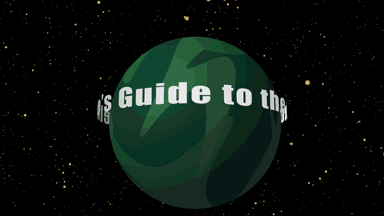Scienceline’s Guide to the Exoplanets: The Water Shroud
K2-18b: A world with vast wells of water in its skies
Rahul Rao • September 22, 2020

Your favorite planets, and you didn't even know they existed. [Credit: Curtis Segarra | CC BY-NC-ND 2.0]
The Water Shroud
K2-18b
Discovered by: K2 (Kepler “Second Light”)
Discovered: 2015
Distance from Earth: ~124 light-years
Mass: ~8.5 Earth masses
Radius: ~2.6 Earth radii
Surface climate: Water is wet
Habitability for humans: Sadly, no.
You may have seen something about K2-18b before; it garnered a fair bit of attention last year, when astronomers announced they’d detected water vapor in its atmosphere.
At over eight times the mass of Earth, K2-18b rests solidly in the blurry boundary region between the most massive super-Earths and the most lightweight gas planets. When the planet was first discovered in 2015, scientists initially thought it was a small ice giant, a miniature of Uranus or Neptune. But further observations threw that into question; around the time of the water vapor excitement, there was much speculation the planet had a surface. Now, however, scientists have returned to their original beliefs that K2-18b is a small gas giant.
K2-18b orbits a red dwarf around 124 light-years from Earth. It’s close enough to its star that it has a very short orbit — around 33 days — and is likely tidally locked. But that isn’t what we’ll be talking about. As you might have imagined from this blog’s introduction, it is the planet’s atmosphere that is, as far as astronomers currently know, its defining feature.
That atmosphere, astronomers think, is fairly thick, mainly consisting of hydrogen and helium like your standard gas planet. Also, perhaps as much as a quarter of it consists of water vapor. In comparison, Earth’s atmosphere is only around 1% water vapor, lost in vast quantities of nitrogen and oxygen.
It was hardly the first exoplanet to have been found to host water in its skies — plenty of other gas planets have been observed to have water vapor. But it is the first exoplanet to have water vapor while being firmly in its star’s habitable zone. That’s an indication that K2-18b likely has clouds not entirely unlike those you’d see if you looked up on Earth’s sky, and a sign that K2-18b might also have rain.
So, is K2-18b habitable — by Earth standards, anyway?
The answer is a resounding probably not. Even if K2-18b did have a surface, the heightened gravity, plus the atmospheric pressure, would likely mean that anything down there would be crushed quickly, as it would be if you were to set foot on Venus.
But that doesn’t mean it’s not completely habitable. It’s possible that, somewhere deep under the gas, there lies an ocean of liquid water, and we do know that high-pressure oceans can host life. Even higher up, it’s been speculated that gas giant atmospheres do indeed have the capacity to host some form of life. And you’ve likely heard the speculation about just where that phosphine on Venus is coming from.
The good news is that K2-18b’s size, coupled with its close distance to the illumination of its star, makes it an ideal candidate for further studying that atmosphere. There may be more details — or even more questions — forthcoming, especially after the James Webb Space Telescope launches and turns its lenses to the planet.
1 Comment
I like it so beautiful